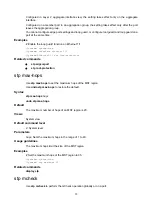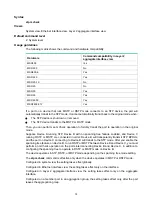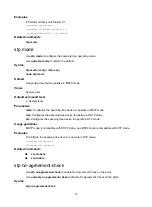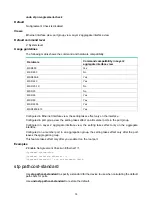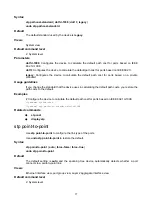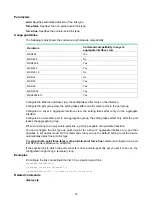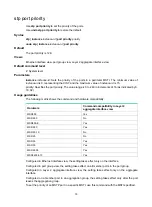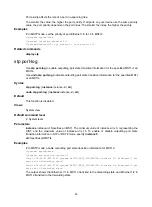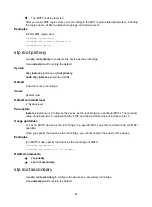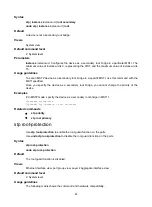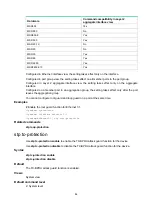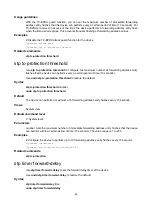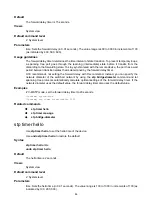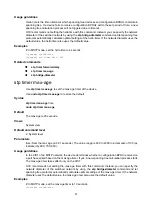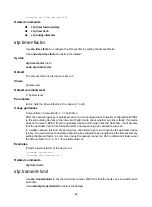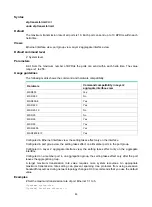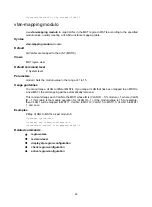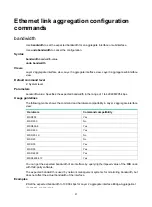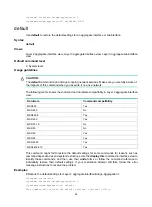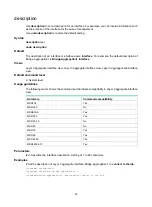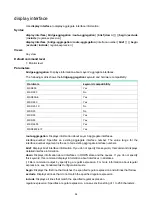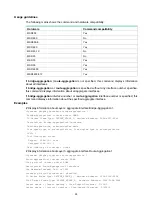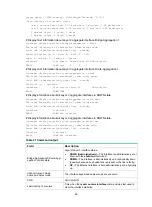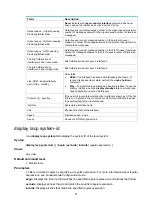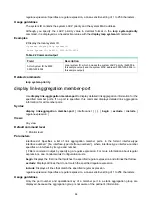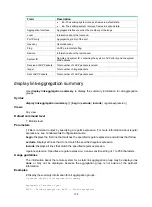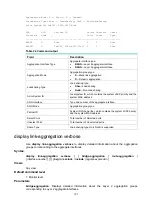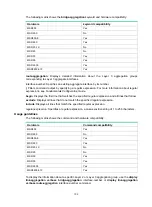
87
Usage guidelines
Hello time is the time interval at which spanning tree devices send configuration BPDUs to maintain
spanning tree. If a device fails to receive configuration BPDUs within the set period of time, a new
spanning tree calculation process will be triggered due to timeout.
H3C recommends not setting the hello time with this command. Instead, you can specify the network
diameter of the switched network by using the
stp bridge-diameter
command and let spanning tree
protocols automatically calculate optimal settings of the hello timer. If the network diameter uses the
default value, the hello timer also uses the default value.
Examples
# In MSTP mode, set the hello time to 4 seconds.
<Sysname> system-view
[Sysname] stp timer hello 400
Related commands
•
stp timer forward-delay
•
stp timer max-age
•
stp
bridge-diameter
stp timer max-age
Use
stp timer max-age
to set the max age timer of the device.
Use
undo stp timer max-age
to restore the default.
Syntax
stp timer max-age
time
undo stp
timer max-age
Default
The max age is 20 seconds.
Views
System view
Default command level
2: System level
Parameters
time
: Sets the max age (in 0.01 seconds). The value range is 600 to 4000 in increments of 100 (as
indicated by 600, 700, 800).
Usage guidelines
In the CIST of an MSTP network, the device determines whether a configuration BPDU received on
a port has expired based on the max age timer. If yes, a new spanning tree calculation process starts.
The max age timer takes effect only on the CIST.
H3C recommends not setting the max age timer with this command. Instead, you can specify the
network diameter of the switched network by using the
stp bridge-diameter
command and let
spanning tree protocols automatically calculate optimal settings of the max age timer. If the network
diameter uses the default value, the max age timer also uses the default value.
Examples
# In MSTP mode, set the max age timer to 10 seconds.
<Sysname> system-view

